Spoilers for The Witcher book series below.
CONTENT WARNING: Discussion of the sexualisation of children.
No disrespect intended towards fans of The Witcher. Some disrespect intended towards Andrzej Sapkowski, though I can’t prove he had bad intentions. All I can say is that I don’t like the way he writes about young girls.
Introduction
It is time once again for me to get on my high horse, this time about a different series which I have a love-hate relationship with. For a change, I shall not be attacking George R.R. Martin or HBO today, but another author, who is like GRRM in many respects – too many, unfortunately. He is Andrzej Sapkowski, author of The Witcher, the fantasy novels behind the bestselling video games (which are very good), and the ongoing Netflix series (which is not).
Defining ‘the ick’
I use the term ‘the ick’ here because it’s particularly appropriate in this case – as you probably know, ‘the ick’ is an expression describing the feeling you might have when seeing a romantic partner in a different context, or acting differently, and suddenly finding that person unattractive. As a long-time fan of the games, short stories, and universe of The Witcher,1 which has interested me for the last decade and influenced my own creative projects, the series is the equivalent of a partner that has suddenly become repulsive to me, due to my foray into the first novel: Blood of Elves.
I had always been somewhat wary of the novels, for reasons I won’t get into here. Recently, though, I decided to bite the bullet and listened to the Blood of Elves audiobook, and turns out I was right to be cautious.
The Witcher has many positive qualities, which I could describe here, but I won’t, because Mr Sapkowski gets more than enough praise, and doesn’t need more. Instead, I want to limit the scope of this post to one particular area – the troubling sexuality in Sapkowski’s writing, which for me became very apparent in Blood of Elves.
Battle heels and plunging necklines
These tendencies did not come as a total surprise to me – the video games, after all, are more than usually horny, to an almost comical degree. Women in the Witcher games2 have a tendency to go half-naked whatever the weather, and even in lawless war zones with more rapists than you can shake a stick at. They also wear high heels in combat, which looks more perilous than any of Geralt’s acrobatics, and are generally subject to unlikely costume design, sometimes to a point that actually damages immersion in this otherwise quite grounded and believable world.
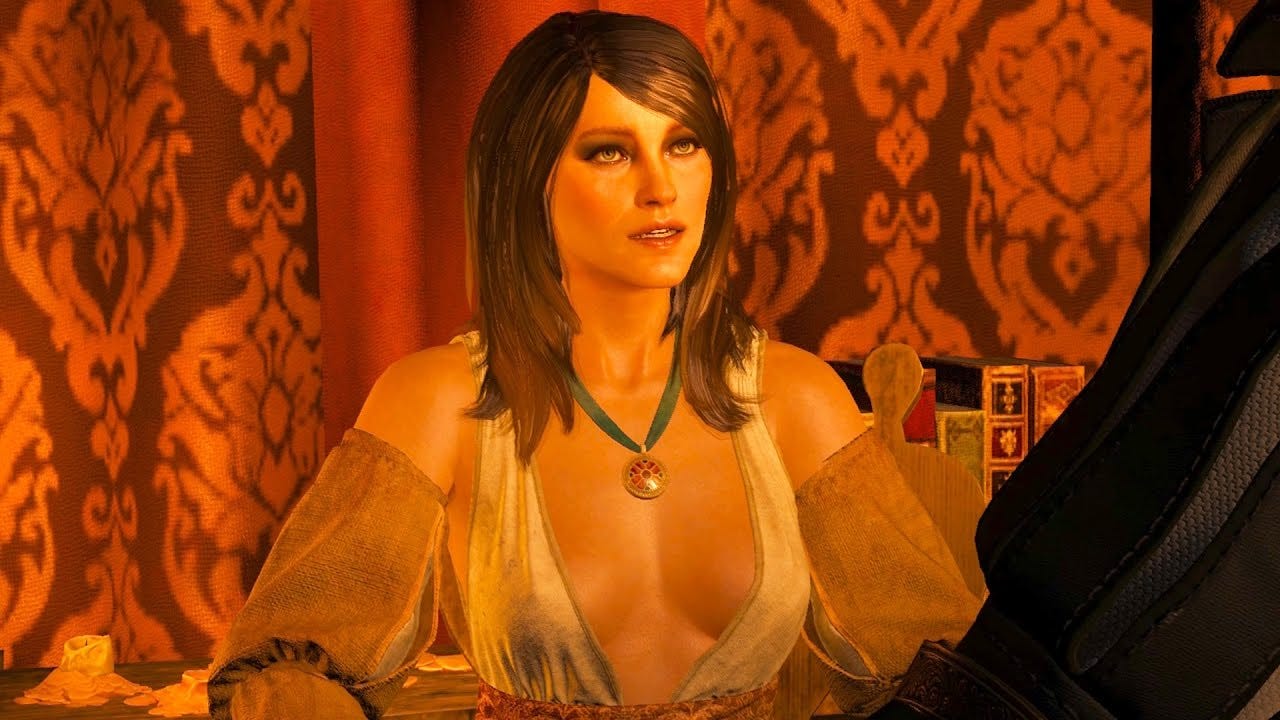
This is to say nothing of the rampant prostitution throughout the world, numerous hook-ups that Geralt can indulge in, and widespread gender-related violence, the handling of which ranges from very rigorous3 to very gratuitous.4
Maybe this is just how you sell games, although given the overall quality of The Witcher 3, I think it’s fair to say that CDPR didn’t strictly need to put in quite so many naked women to make it a success.
In short, Blood of Elves being comically horny did not come as a surprise, nor is it deeply troubling in and of itself.
Drool-stained manuscripts
What I did find particularly troubling in Blood of Elves, however, is not a tendency to find busty and half-dressed women everywhere, as you do in the games, but a more disturbing trend, which could be described as hebephilic at best, of the ‘middle-aged George R.R. Martin blatantly drooling over thirteen year old Daenerys’ variety.
Specifically, Sapkowski appears far too interested in the body and nascent desires of twelve year old co-protagonist Ciri. This wasn’t without precedent in the short stories – after all, Ciri was conceived while her mother was fifteen and having an affair with a much older man, and this couple’s marriage is rather dubiously presented as a happily ever after in the story.
In Blood of Elves, however, it got quite a bit worse. Sapkowski clearly considers it very important to keep the reader informed about the development of Ciri’s breasts, which he brings up more than once – the first time, early in the book, relatively delicately and appropriately,5 and later much less delicately, as Yennefer examines Ciri’s naked body after bathing.
This latter struck me as extremely unnecessary, even repulsive, but it’s pretty much par for the course in terms of how Yennefer (/Sapkowski) treats Ciri.
Yennefer: Somehow worse than I expected
Yennefer begins her relationship with Ciri by examining her and making comments on her features as if she isn’t there, and later threatens to paralyse Ciri with a spell in order to strip her naked and study her further. She only gets Ciri’s ‘consent’ to this procedure having made very clear that Ciri has no choice but to cooperate, and that Yennefer is prepared to use force if she doesn’t agree. Is this a good way for an adult to behave towards a child? Is it even excusable?
I would say, no, it isn’t. I said the same thing when Netflix’s version of Yennefer dragged Ciri to a bathhouse full of gigolos, and made her wait on her loathsome friends in a humiliation ritual after the girl had the temerity to try to prevent animal cruelty. The point of this is that I did not have reason to expect anything positive from Yennefer,6 but somehow Blood of Elves still managed to surprise me.
Yennefer is very anxious to impress upon the twelve year old Ciri (and the reader) that Ciri is now ‘a woman’, having had her first period7 and (as the author is ever-ready to remind us) begun to develop breasts. Yennefer is also keen to remind Ciri that she’d have been married off by now if circumstances had been different. Far from wishing to let Ciri enjoy the remainder of her childhood, which would be appropriate, given that she is – and I cannot emphasise this enough – twelve, Yennefer seems to have spent a lot of time impressing the importance of gender and sexuality upon Ciri, who is already flirting precociously with a sixteen year old boy.
One wonders if she would be doing this if she wasn’t continually subject to physical scrutiny and, to put it bluntly, being sexualised by Yennefer herself, whose constant harping on the subject forces Ciri to evaluate herself in sexual terms despite the fact that she is not even a teenager yet. Yennefer’s comments that Ciri is ‘jealous’ of her own body is part of this equation - Yennefer (who I take to be the voice of the author) clearly believes that Ciri should already be comparing herself to adult women and competing with them sexually.
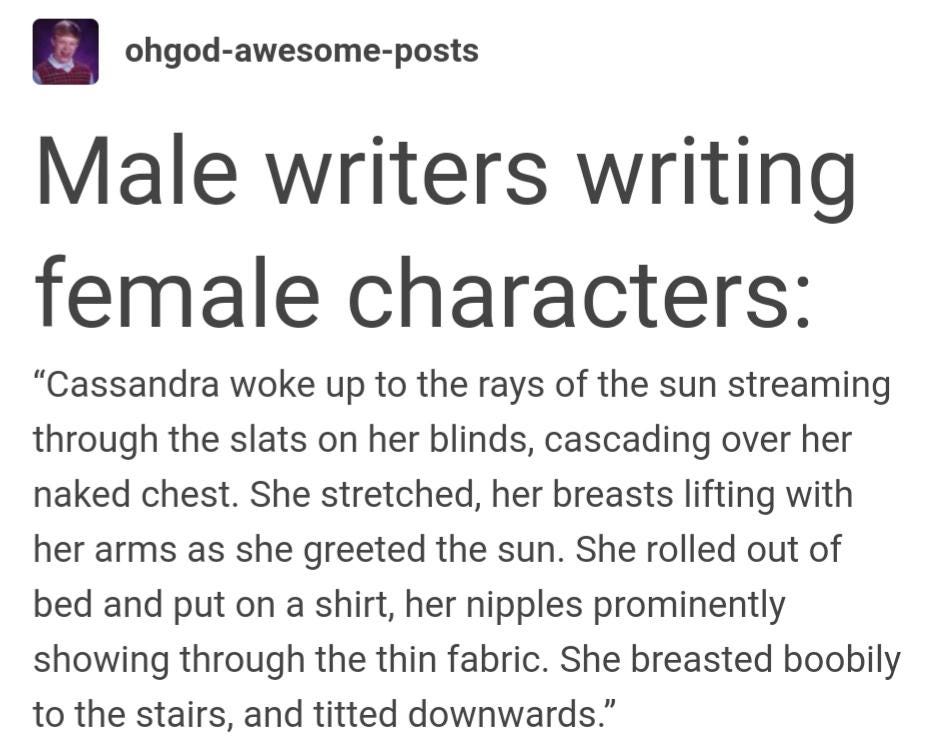
There is also probably a double standard at work here: would the extent to which Yennefer looks at and comments on Ciri’s body, dressed and undressed, be considered acceptable in the eyes of readers, editors and publishers if this was a male guardian? More to the point, is it appropriate for a male author to be describing Yennefer’s interactions with a twelve year old girl in this way? Yennefer is an invention; Sapkowski isn’t.
Ciri also spends a good amount of Blood of Elves anxiously fretting over the fact that she is a virgin, based on the in-universe misconception that virgins can’t use magic. Instead of telling her ‘of course you’re a virgin, you are twelve,’ as would be right and proper, or explaining simply, clearly and straight away that this is a misunderstanding, Yennefer does a whole strange and irresponsible rigmarole, even sardonically advising Ciri to go out and lose her virginity if it’s so important to her.
Later, as Ciri spends yet more time inordinately fretting about sex,8 she asks Yennefer when it’s the right time to sleep with someone. Yennefer responds with yet more unhelpful prevarication, effectively leaving Ciri to her own devices. To be fair, she does try to discourage Ciri from spending time with sixteen year old Jarre, but in the very same conversation she herself examines and makes comments on Ciri’s naked body and her ‘maturity,’ which sends mixed messages at the very least. Defenders will say that Ciri is totally comfortable being naked in front of Yennefer, so it’s fine. Why, then, does Yennefer have to order her to lower her hands, which she is using to cover herself?
There is also a dubious undertone in the way that Ciri’s age-appropriate friends all turn on her after she begins studying with Yennefer, being reduced to jealous ‘mean girl’ stereotypes. Sapkowski isn’t interested in normal friendships between girls - he’d rather write about Ciri’s interactions with a perverse adult woman and a horny older boy. It also seems dubious that the boy Jarre is used to convey political exposition, while Ciri’s female friends are pretty much depicted as mean, shallow and ignorant. The Temple of Melitele is supposed to train girls to be teachers, healers, herbalists, etc., therefore these girls should be as smart and informed as Jarre, and as capable of having intelligent conversations, but the author prefers them to be basic mean girls (they are also gossips who lust over Jarre, because of course they are). Ciri is also extremely bored by her lessons from Nenneke and the other women at the temple, preferring Yennefer’s lessons.9
Sus magic
There is also a whole strange connection between magic and female sexuality throughout the book, the details of which I don’t really want to delve into too deeply, a) because my mother reads this newsletter, b) because it’s all very mystical and I can offer very little insight, not being an Iron Age shaman or druid. One particularly odd scene featured Yennefer teaching Ciri to use magic, and Ciri complaining of pain in her nethers while spellcasting. Yennefer assures her this is normal because ‘you’re a woman,’10 and must be dealt with and accepted. It seems that every aspect of Ciri’s magical education has to be a crude analogy to her sexual development,11 which again, the author seems altogether too preoccupied with.
Given the odd sexual overtones of the adult Yennefer’s interactions with Ciri in Blood of Elves, it is perhaps no surprise that later in the series, Ciri is repeatedly abused by an older girl. Ciri falls in love with her abuser, because of course she does, and they get matching tattoos.
Enforcement of gender roles
Connected to what I have written above, I am also unsure what to make of the book’s depiction of Ciri’s feminisation, i.e. the extent to which she is pushed back into a female social niche by her guardians.
Certainly, there are some positive aspects of this, specifically with Triss’12 interactions with Ciri. For Ciri, having a woman as a confidant and advocate is important at the beginning of the book, when she is being raised by male witchers. Although the witchers are well-meaning, and raising Ciri the only way they know how to, they are oblivious to things like periods, which Triss rightly makes an issue of on Ciri’s behalf. Also, being witchers, and therefore products of extremely harsh training, they have very different thresholds of what constitutes training vs what constitutes physical abuse.
However, Triss also makes a big deal about the fact that Ciri’s outfit is ugly,13 puts her in dresses and has her behave like a princess. This is not totally unjustified, as Ciri admires Triss’ hair and clothes, and clearly likes feminine clothes and presentation. Nevertheless, the effect of Triss’ encouragement, followed by Yennefer’s, is to push Ciri back towards a strictly female role, as opposed to the somewhat nonconforming role that she had moved into previously.
The plot is also contrived in such a way as to force Ciri to pursue magical training, which is extremely female-coded, as opposed to her witcher training, which was highly male-coded.14 She has been assigned magic user at birth.
I am not entirely sure how I feel about all of this. Is it a thoughtful commentary on how gender determines real people’s destinies, whether we like it or not? Or is it just gender essentialism with extra steps? The extremely positive tone around Ciri’s female-affirming magical education suggests the latter to me, although I’m sure some readers will disagree based on her path in the subsequent books.
Whatever it is, it’s certainly closely connected to Yennefer’s constant sexualisation of Ciri, which I need not belabour any further.
Shani
I would also add that it’s not just the Ciri stuff in Blood of Elves that is suspicious (although that is certainly the most suspicious because she is, for the hundredth time, twelve). There is also a scene in which Dandelion and Philippa Eilhart walk in on Geralt (about 50) with the seventeen year old Shani, which is a) gross, in my opinion,15 and b) made more gross by the fact that both Dandelion (about 40) and Philippa (about 300) proceed to openly ogle Shani instead of giving her privacy.
Why is everyone in this book like this?
The banality of evil, again
One more point: I found the book’s lengthy political discussions between kings, queens, spies, sorcerers and sorceresses quite hard going. These characters have very little to distinguish them, all having near identical ‘voices’ and personalities, which are a combination of languid, cynical, and casually evil. As such, I simply don’t find them compelling. I don’t want to know anything more about their worldviews or life stories. I certainly can’t empathise with them on any level.
Once again, I’m going to quote Le Guin:
The trouble is that we have a bad habit, encouraged by pedants and sophisticates, of considering happiness as something rather stupid. Only pain is intellectual, only evil interesting. This is the treason of the artist; a refusal to admit the banality of evil and the terrible boredom of pain.
The extent to which I viscerally dislike these heads of state and their advisers is perhaps the point, because I find myself sympathising with Geralt’s anti-politics worldview more than I did already.16 Still, I felt that these ‘banal evil’ entities got a lot more time and attention than they really required.
It actually seems to me that Netflix has adapted these characters quite well, because 90% of its recurring ‘political’ characters (who are mostly sorcerers or sorceresses) are absolutely insufferable, and get enormous amounts of screen time, and if nothing else I would call that an accurate reflection of the books.
Closing thoughts
To sum up, Blood of Elves was not a good experience for me. I would not say it was a ‘confronting’ or ‘challenging’ one - this would imply that the reader’s discomfort is fully intended by the author, and is necessary to convey a key narrative point. Here, though, my discomfort was clearly not intended by the author, who was apparently under the impression that he was crafting a wholesome and liberal-minded coming-of-age story in the sections with Ciri and Yennefer. What he actually wrote was quite different, and it saddens me to find this kind of content in bestselling books, which are celebrated and uncritically consumed all over the world.
I am not likely to continue with Sapkowski’s books any time soon; it’s clear that they are not for me, and I wouldn’t want to further tarnish my positive feelings towards the games. Perhaps they do have literary value - they are certainly loved by a number of people whose opinions I value and respect - but you have to wade through a lot of nastiness to get there, and, for the moment at least, my personal threshold has been reached.
I should probably make my next fantasy read something by a woman.
And even the Polish TV series from the 2000s, which in my insane fringe opinion is actually quite good.
At least if they’re important characters. Peasants tend to have dresses which are more modest and authentic-looking.
The Bloody Baron’s storyline in 3.
Various incidents in 1 and 2.
Triss makes the point that Ciri’s physical development may be affected by her harsh training at the witcher school of Kaer Morhen.
She is a walking collection of red flags in the game, too, if anyone’s wondering. She treats Geralt like a dog, which multiple people who know them comment on; treats his fellow witchers (i.e. his surrogate father and brothers) like dirt in their own home; is unbelievably jealous, while unfaithful herself; reads Geralt’s thoughts without consent and even if told to stop; and is so controlling that she will even try to get Geralt to coordinate his outfit with hers. She belongs in the psychological horror genre.
Again, brought up more delicately and appropriately during the earlier section with Triss. I was never a big Triss fan, but she is undoubtedly a lot less weird about Ciri.
Because she is being written by Andrzej Sapkowski…
Sapkowski has (unsurprisingly) addressed allegations of sexism many times, and clearly considers himself a great admirer and supporter of women. But the mileage of readers may vary. He’s the kind of guy who makes grandiose statements like ‘women have always been stronger than men’, which just seems like overcompensating.
Again, it’s inappropriate to be calling a child ‘a woman’ in the way that Yennefer is, i.e. with this connotation of sexual maturity that Yennefer/Sapkowski adds to everything.
If Ciri’s pain here was supposed to be an allusion to periods, it seems redundant, given that the latter is discussed frankly and justifiably in the first part of the book.
You know it’s bad when Triss Merigold, the woman so pathetically obsessed with Geralt she tries to seduce him even while suffering from dysentery, is the most mature, stable, and responsible woman in this book. There’s also Nenneke, who is too old to be sexualised and therefore is written like a well-rounded human.
The outfit was homemade, and it was homemade because the witchers live in poverty, not because they don’t care about Ciri. Moreover, they’re poor and uninvolved with politics (Triss takes immense issue with the latter) specifically because mages like Triss massacred most of them not that long ago, and the survivors have to keep a low profile. Triss really needs to stay in her lane, and let people live their lives.
And which she emphatically did want to continue, despite liking dresses.
The counter-argument is that Shani is just so mature and empowered that it doesn’t matter that she’s 17, which is exactly the argument that real-life predators invariably make.
I’m aware that the ‘neutrality’ debate goes back and forth in the books, but Blood of Elves did seem to pretty strongly validate Geralt’s worldview, most obviously with the whole Shaerrawedd bit, the gist of which is that the elves chose revenge over their future, and will never recover what it cost them. Geralt’s point about Shaerrawedd is clearly relevant to Triss’ badgering of the witchers, who like the elves would be wiped out if they got involved in the war, as Triss insists they should. It’s a pity he didn’t say this to Triss, but Geralt’s always a doormat for the women in his life.


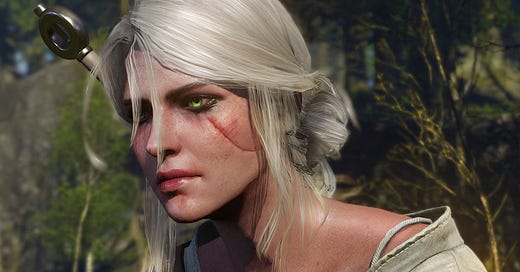


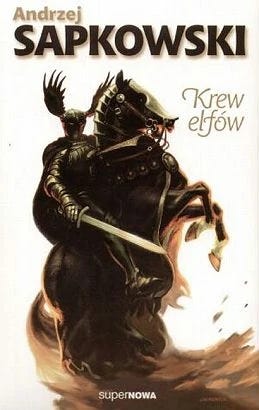
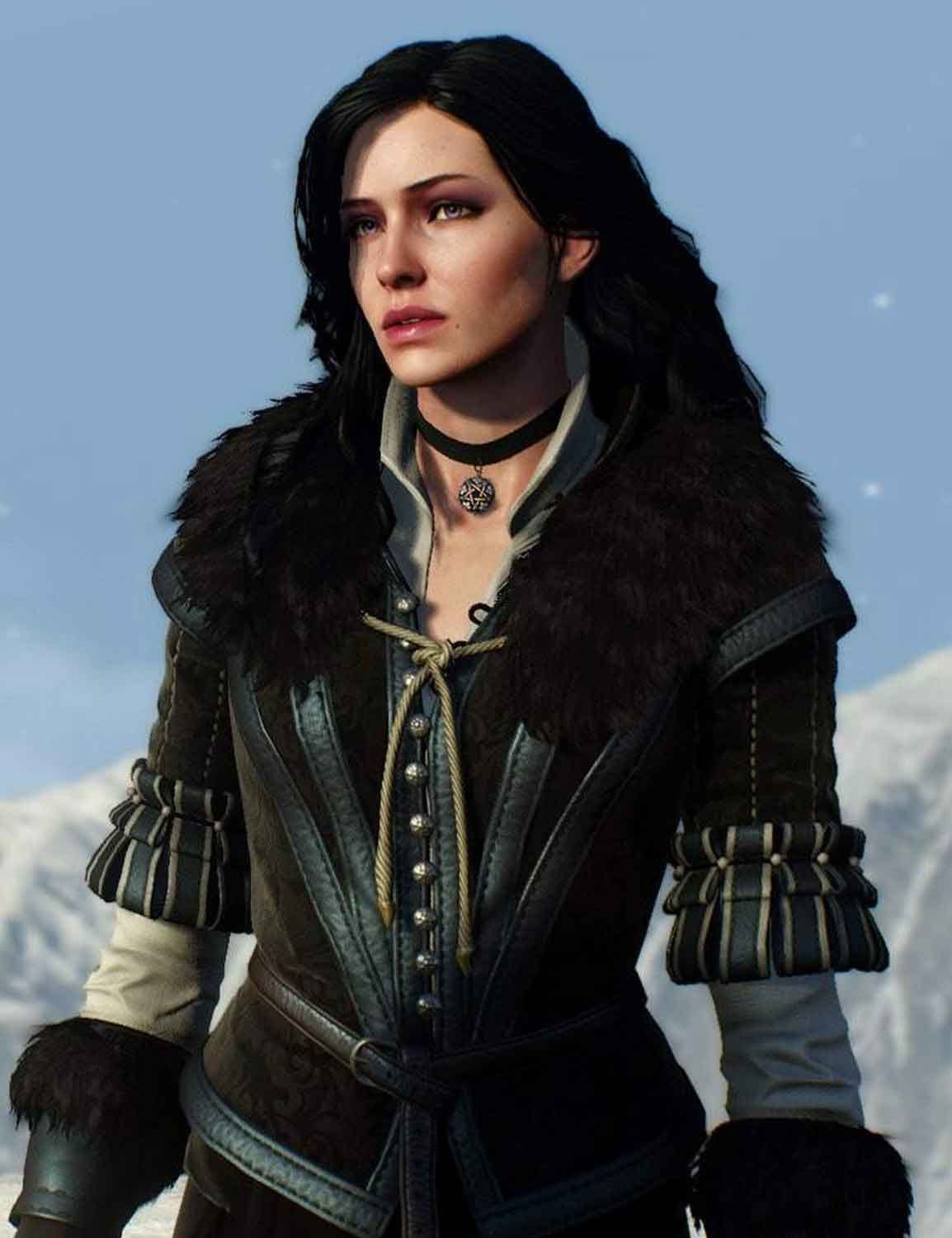

I think this captures the problematic age gaps that come up in fantasy best:
https://youtu.be/mONdshkDTTE?si=Xu2f12JT01VwlVLT
I agree about the ick, and I think a good portion it can be explained by cultural differences between the former Soviet Union and “The West” where a lot of the relationship to sexuality is not quite the same.
Some of it is also a generational gap that has emerged: Andrzej Sapkowski was born in 1948, and I’ve heard my father-in-law defend Woody Allen way too much, so I think this represents a way culture has shifted as well.
My favorite part of Blood of Elves was the caravan bit, and I love how Sapkowski wrote the racial tensions. My least favorite part was easily Ciri's training with Yennefer, I knew it was supposed to feel wholesome but it just felt really creepy for all the reasons you pointed out. That, and how women were written in general, was really jarring to me since I'd previously heard Sapkowski praised for writing women.